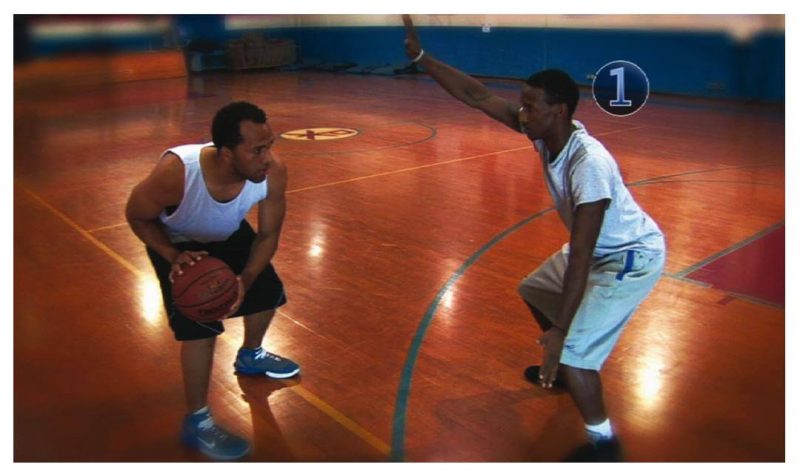Home »
Misc »
How to remove air from a basketball
How to remove air from a basketball
How to Deflate a Basketball (A Super Detailed Guide)
In previous articles, we have discussed how to inflate a basketball and why it is important to have it inflated to the proper level. Since we have learned the proper way to inflate a ball, you may be curious as to how you might deflate it if the need ever arises.
Inflating a basketball is pretty common and is something that you might need to do quite often. But, what about deflating it? Are there any situations in which I will need to deflate my ball?
Quick Navigation
Why Would I Need to Deflate a Basketball?
The need to deflate a basketball is much less common but there are some situations that may arise in which you will need to do this.
Overinflated
The most common reason that you would need to deflate a basketball is that it is overinflated. A ball with too much air in it will make playing basketball more difficult because it will bounce higher than expected making it difficult to control.![]()
This may make dribbling the ball seem a bit easier, but it will also make your bounce passes go farther than expected and your shots will bounce too hard off the backboard and rim causing you to miss shots that you ordinarily would not miss. Although dribbling may seem easier at first, you are likely to lose control of the ball because of the high bounce.
You might wonder, how did my basketball become overinflated? The likely answer is that it was overinflated when you or someone else pumped it up.
Air temperature and altitude can also affect the air pressure in your basketball. If you originally pumped it up to the correct pressure outside on a cold day and then a few days later, it is very warm outside, the pressure inside the ball will increase and it may become overinflated.
This can happen with altitude also. If I inflate the ball in Indianapolis, Indiana where the altitude is about 715 feet and then bring the ball to Denver, Colorado (altitude of 5280 feet), the air pressure inside my ball will increase and the ball may become overinflated.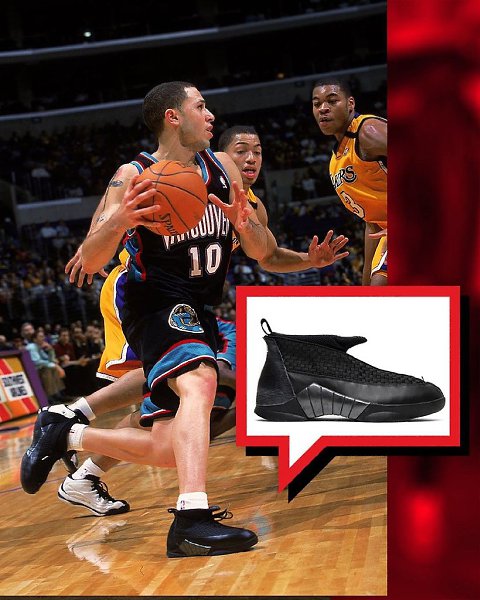 If I then take the ball up to Vail Pass (altitude of 10,666 feet) it will most definitely be overinflated.
If I then take the ball up to Vail Pass (altitude of 10,666 feet) it will most definitely be overinflated.
Storage or Transport
You might want to deflate a basketball to store or transport it. By deflating it, we can reduce the size and it will take up less space in a drawer, suitcase or whatever you might be putting it in.
A word of caution, deflating a nice leather or synthetic ball can possibly damage it. Deflating it completely can sometimes cause the leather or synthetic panels to separate and ruin the ball. It is not something that will definitely happen but something to look out for. Just make sure you deflate it slowly and keep an eye on the ball. There is no need to worry about this for all rubber balls.
How to Deflate a Basketball: What You Will Need
Inflation Needle
These are relatively cheap and can be found at almost any store that carries any type of athletic equipment. They can also be found easily on Amazon.
See the picture below if you are not familiar with what they look like.
Inflation Needle. Photo by Melissa Medina.
Warning: I have seen articles on the internet saying that you can use paper clips or other objects to insert in the air valve. I do not know if these other items will work, but there is a good chance that these can permanently damage your basketball, so I highly recommend using an inflation needle to do this. They are easy to find and very cheap.
Air Pressure Gauge (optional)
You may want to get an air pressure gauge to check the pressure in your ball. Air pressure gauges can be found online or in stores, but as we mentioned above they are optional and not necessary to deflate your basketball.
How to Deflate a Basketball without an Air Pressure Gauge
Use this method if you do not have a pressure gauge or if you are deflating the ball for transport or storage.
Step 1: Check the pressure in your ball
If your ball feels a little lively and you think it needs to be deflated a little check the air in your ball by dropping it from about chest level and see if bounces back up to about your waist. If it bounces higher, it is probably overinflated.
If it bounces higher, it is probably overinflated.
If you are just deflating it for transport or storage, you can skip this step.
Step 2: Moisten the inflation needle
Use water or even saliva to moisten the needle. This is important because the lubrication makes it easier to insert the needle and prevents damage to the air valve.
Step 3: Insert the needle into the air valve
Using the needle by itself (no air pump), insert it into the air valve of the ball (see picture below). Push the needle down until it is all the way in the ball as shown in the picture.
Inserting the needle into the valve.
Step 4: Let the air escape
At this point, you should hear the air coming out of the ball. If you are trying to deflate it for storage or transportation, you may have to squeeze the ball once it is partially deflated. This will help get more of the air out.
If you are only trying to reduce the air pressure, then you do not want to leave the needle in long.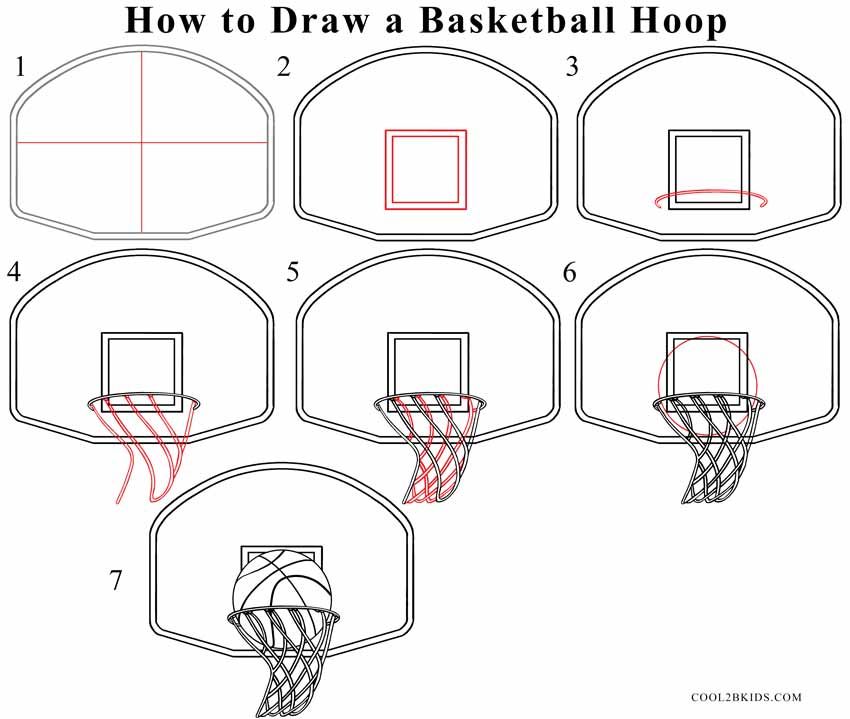 Depending on how much air you need to remove, it may only need a second or two.
Depending on how much air you need to remove, it may only need a second or two.
Step 5: Remove the needle
Once you feel you have let out a sufficient amount of air, remove the needle by pulling it straight out of the air valve.
Step 6: Check the air pressure again
If you are deflating for storage or transport you can skip this step. If you are adjusting the inflation level, check the air pressure. If it is still too high, repeat this process again starting at step 2.
If you let out too much air and it is now underinflated, you may need to add more air using a pump.
Continue this process until you get a good bounce.
How to Deflate a Basketball with an Air Pressure Gauge
Step 1: Moisten the inflation needle on the pressure gauge
Use water or even saliva to moisten the needle. This is important because the lubrication makes it easier to insert the needle and prevents damage to the air valve.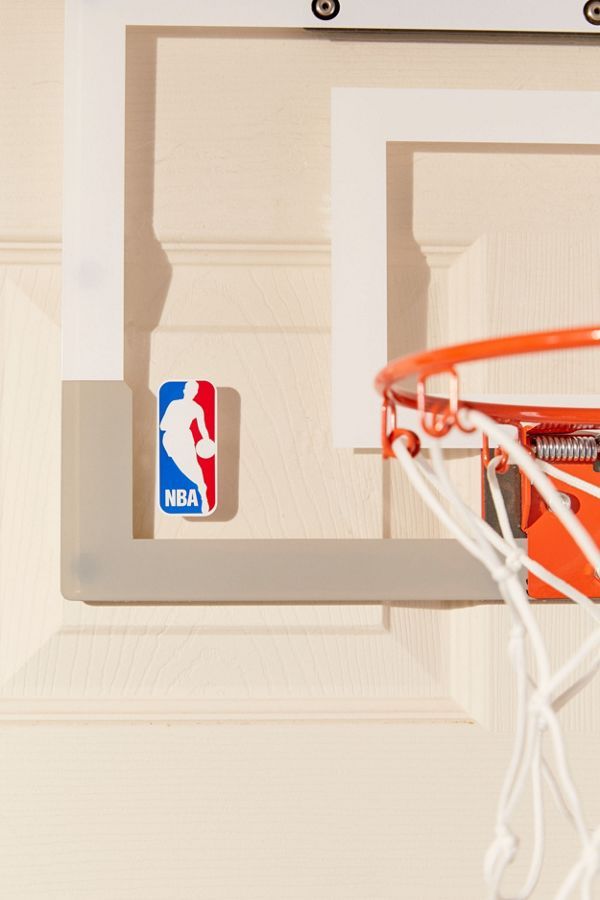
Step 2: Insert the needle of the pressure gauge into the air valve
While the needle is attached to the air pressure gauge, insert the needle into the basketball.
Insert the pressure gauge into the valve.
Step 3: Release air
Press the release valve on the air pressure gauge to begin releasing air. Monitor the pressure as the air escapes and let go of the release valve once you have reached the desired pressure.
Final Words
Deflating a basketball is fairly simple and not something that you will need to do that often. Hopefully, the steps we have listed above will help you if you are ever in a situation where you need to reduce the air pressure in your basketball.
Have you ever had to play with an overinflated ball? We’d love to hear from you, so please leave your comments.
How to Deflate a Basketball
Naturally, you would want to inflate a basketball to a proper level when it’s time to play. However, there may be instances when you would want to do the opposite such as when you over-inflate the ball or pack it in your suitcase when you travel. In any case, this article will discuss the five best ways on how to deflate a basketball. From there, you can decide what procedure works best relative to the circumstances you are in.
However, there may be instances when you would want to do the opposite such as when you over-inflate the ball or pack it in your suitcase when you travel. In any case, this article will discuss the five best ways on how to deflate a basketball. From there, you can decide what procedure works best relative to the circumstances you are in.
I. Why Would You Deflate a Basketball?
II. What are the Best Ways to Deflate a Basketball?
III. Fixing Leaks in a Basketball
IV. Wrapping Things Up: How to Deflate a Basketball
Why Would You Deflate a Basketball?The most common reason to deflate a ball is that you accidentally inflated it too much. Over-inflated balls are no fun to play with and may cause abnormal bouncing or, worse, injuries to the fingers.
Another possible result of an over-inflated ball is that it goes off the rim too hard on missed shots. It would also make your bounce passes a little harder and more difficult to catch.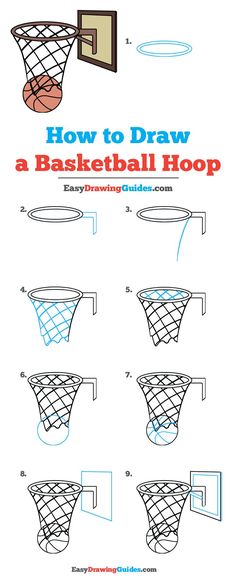 At first, it may make the ball a little easier to bounce when dribbling, but more often than not, it may eventually cause errant dribbles.
At first, it may make the ball a little easier to bounce when dribbling, but more often than not, it may eventually cause errant dribbles.
Still, you may want to deflate a basketball because you want to store it in a bag, perhaps when you are traveling. This is important and practical since traveling with and storing an inflated ball in a bag takes up too much space. Additionally, it’s troublesome and takes too much space.
Here’s a word of caution when it comes to basketballs: A lot of things may affect air pressure inside the ball. You may not realize it, but temperature can influence the ball’s air pressure. If it’s too cold, it may decrease the air pressure, and hot weather may do the opposite.
That could also happen with altitude. The higher the place’s elevation, the more significant the increase of the air pressure in the ball. If you bring a perfectly inflated ball from Britton Hill, Florida (100 ft average elevation) to Mt. Elbert, Colorado (average elevation of 6,800 ft), you will certainly see that the ball is over-inflated.
What are the Best Ways to Deflate a Basketball?Deflating a Basketball With an Inflation Pin This is perhaps the easiest, safest, and most appropriate way to deflate a basketball. Brand new balls almost always come with an inflation pin or needle, so it’s even less of a worry. Here are some things to keep in mind.
- Make sure the pin is moistened before inserting it into the ball. You can do so by briefly putting it in water, applying saliva, or some lubricant. Of course, using saliva by licking the pin is not recommended because it is unsanitary, but in cases where you have limited options, you may have to do that to complete the task.
- If you need to completely deflate the ball, you can remove the air pump and just let the air come out. Conversely, if you over-inflated the ball and only want little air to come out, it is advisable to let the air pump stay attached to the needle.
- If you’re going to deflate the ball using the inflation pin alone with no air pump, simply push the needle down until you hear the air making its way out of the ball.
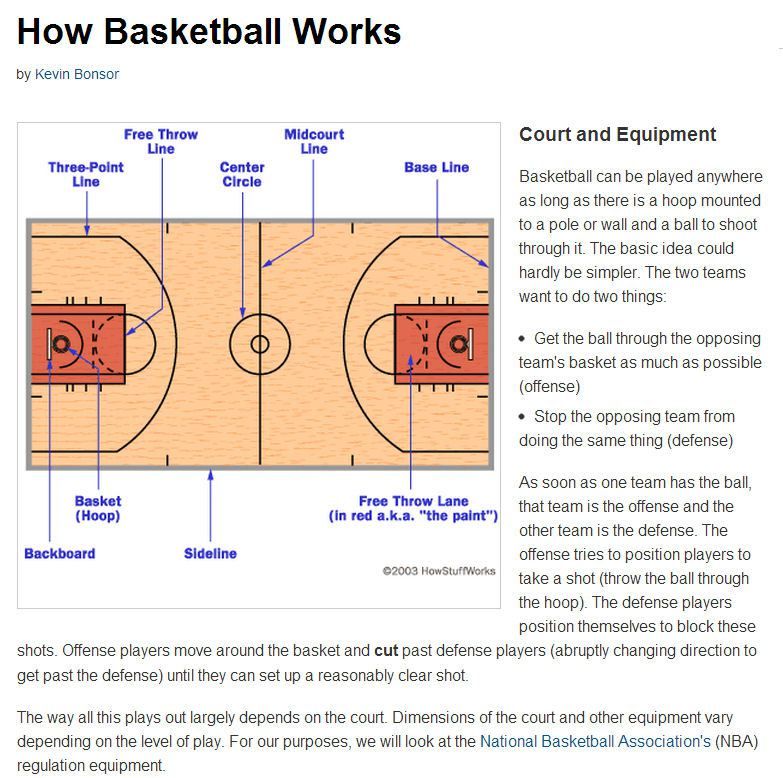 Again, if you do not want to rid the ball of air completely, do this procedure for only a second or two.
Again, if you do not want to rid the ball of air completely, do this procedure for only a second or two. - As soon as you feel you have let enough air out, remove the needle from the ball. If you want to completely deflate the ball, you may have to aid the process by squeezing the ball tightly. Most of the time, if you’re just letting out a little of the air pressure, a quick check using your hands will do.
Deflating a Basketball With a PaperclipThere is the best way to deflate a basketball, and there is one where you have to think it through. Using a paperclip to deflate a ball is one of those times you have to think through. Of course, we recognize that desperate times need desperate measures, but if you have a choice between a real inflation pin and a paperclip, go with the former every time. That said, if you’re in a bind and can’t find any pin, be resourceful and take a stab at it.
Here is how to deflate a basketball using a paperclip:
1. Straighten the paper clip the best way that you can. Make it as straight as a needle, moisten it using water (or you can get creative), and slowly insert the clip into the valve.
Straighten the paper clip the best way that you can. Make it as straight as a needle, moisten it using water (or you can get creative), and slowly insert the clip into the valve.
2. It is important to make sure the clip goes right into the center so it won’t puncture the ball’s interior bladder.
3. Feel your way through the center as slowly as you can and when the air goes out, ascertain the air pressure and slowly remove the paper clip when it has reached the desired amount.
Remember, this is not the best way to deflate a basketball since there is literally no room for error on this one. Just be careful and don’t rush, or you won’t be playing at all if you accidentally puncture the ball from the inside.
Deflating a Basketball With Bobby Pin or Sewing NeedleIn a perfect setup, there would be no substitute for using an inflation pin or needle for inflating and deflating a basketball. If there is no time to procure one, the next best thing is to find a bobby pin or a needle that should not be too thick to poke a hole in the ball’s internal bladder. Use it as you would a paperclip, slowly making your way in the ball. When air is released, slowly pull out the bobby pin or sewing needle until you get the desired air pressure.
Use it as you would a paperclip, slowly making your way in the ball. When air is released, slowly pull out the bobby pin or sewing needle until you get the desired air pressure.
Deflating a Basketball With a PenThis one is the trickiest method because, really, who would have thought a pen can deflate a ball for you? You would also need some tools like a knife or a scissor, and it would be preferable if the tube has no ink. Here is what you should do:
1. Take the tube from the pen and make sure it has no ink in it. If there is still ink, remove it by running warm water over it.
2. Measure about 1.5 to 2 inches from the bottom and cut the tube from there.
3. Most valves on the ink tube are removable, so the next step would be to take that out of the way.
4. Proceed as you would using a paper clip. Just make sure that the diameter of the ink tube is smaller than the diameter of the ball’s valve.
Deflating a Basketball With an Air Pressure GaugeIf you want to be as accurate as possible, using an air pressure gauge has got to be on top of the best ways to deflate a basketball. Aside from using a pin specifically designed for the purpose, the air pressure gauge makes sure that you are dealing with just the right amount of air.
Aside from using a pin specifically designed for the purpose, the air pressure gauge makes sure that you are dealing with just the right amount of air.
1. As always, you need to lubricate the needle by moistening it, preferably in a hygienic way. The lubrication is critical because it prevents damage to the ball’s air valve.
2. Stick the needle of the pressure gauge into the air valve of the basketball.
3. Push the air release valve on the side of the air pressure gauge to begin releasing air. While you’re at it, carefully monitor the air pressure level until you reach the needed pressure. As a standard, a basketball’s air pressure should be between 7.5 to 8.5 pounds per square inch (psi).
Fixing Leaks in a BasketballIf we are not careful enough, we may get unlucky and cause leaks in a basketball. Whatever the case, if you don’t like spending money on a new basketball, you can fix it yourself using these materials:
- Vinyl. You may use vinyl to cover up leaks or small holes on the ball itself.
 Find the leak by submerging the ball in a water tub (or water pail), watching for air bubbles as you rotate the ball. After you mark the hole, heat a dull knife over an open flame. Put the vinyl over the leak and swab the hot knife over it until it melts. Wait for at least five minutes for the vinyl to harden. Inflate the ball up to the desired air pressure.
Find the leak by submerging the ball in a water tub (or water pail), watching for air bubbles as you rotate the ball. After you mark the hole, heat a dull knife over an open flame. Put the vinyl over the leak and swab the hot knife over it until it melts. Wait for at least five minutes for the vinyl to harden. Inflate the ball up to the desired air pressure. - Bicycle repair kit. If you don’t have vinyl and do have a bicycle repair kit, follow the instructions there, and it should be directly applicable to how to repair leaks on a basketball.
- Repair sealant. Applying a repair sealant is also a viable way to fix basketball leaks. Use a syringe along with the sealant and depress it into the hole.
Wrapping Things Up: How to Deflate a BasketballDeflating a basketball is not a recurring, everyday need, but there may be instances where it is imperative to do so. Two of the most common reasons why you need to deflate a basketball is when you are traveling with one or if you are playing and feel it’s over-inflated. Of course, putting a fully inflated ball in your baggage is not an option, and neither is playing with an over-inflated ball.
Of course, putting a fully inflated ball in your baggage is not an option, and neither is playing with an over-inflated ball.
There are several ways to deflate a basketball. It ranges from the most proper to borderline desperate, and the choice should be up to you and the circumstances you are in. For the most part, we recommend to use an inflation pin or needle as much as you can or an air pressure gauge. Chances are, you don’t have an air pressure gauge handy, so if you’re playing basketball a lot, the next best way is to have inflation pins ready just in case.
With that being said, there will be circumstances where you may need to improvise, especially if you don’t have an air pressure gauge or an inflation pin. You might be a little desperate to try this but a bobby pin, a hairpin, a sewing needle, or a ballpoint pen, may do the trick. You should practice extra caution when dealing with bobby pins, hairpins, and sewing needles because it may puncture the ball’s inner bladder. We don’t generally recommend using ballpoint pen ink tubes since it requires a lot of work, and it can be pretty messy trying to get rid of the ink.
We don’t generally recommend using ballpoint pen ink tubes since it requires a lot of work, and it can be pretty messy trying to get rid of the ink.
The procedure and apparatus mentioned above are some of the best ways to deflate a basketball. We could not say this enough, but we recommend using the inflation pin or the air pressure gauge in the name of safety. There may be other ways to deflate a basketball but to get the most out of a basketball’s life span, use the things that are intended initially to securely deflate a basketball.
Because you read this post, then you may also like our guide on how to inflate a basketball without a needle or pump or our reviews on the best basketball pumps here.
How to lower the ball so as not to spoil it?
0 27
Azteca balls 12/27/2019
Proper care of sports balls will ensure long and trouble-free use without additional expenses. Manufacturers of sports equipment recommend using exclusively specialized equipment, but in some cases a soccer ball can be lowered with the help of improvised means.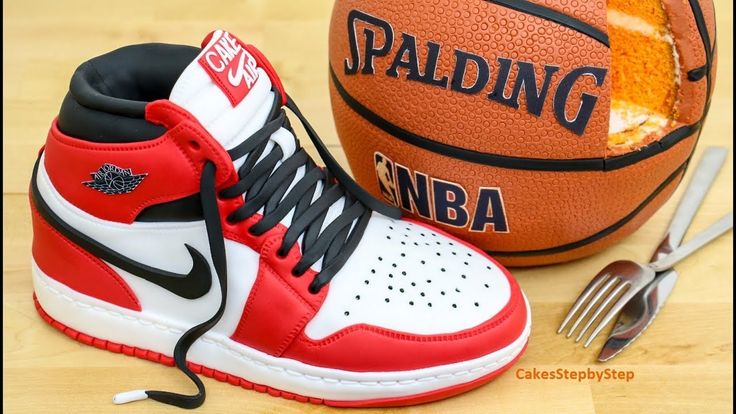 After the game, be sure to deflate the ball a little, because excessive pressure can damage it.
After the game, be sure to deflate the ball a little, because excessive pressure can damage it.
The most common consequences are deformation and weakening of the joints, stretching of the panels. This leads to a deterioration in the game characteristics of the projectile, the loss of the correct shape and a decrease in elasticity. In addition, a ball that is too inflated absorbs moisture faster, which can lead to deterioration.
Proven ways to deflate the ball with improvised means
Usually, a special needle is used for this purpose, which is sold with the pump, and also purchased separately. Its cost is low, so such a purchase will be fully justified. If it was not at hand, other improvised devices will help to replace the needle for the ball.
How to deflate a soccer ball:
- With an empty refill from a ballpoint pen. It should be without a metal tip and ink inside. The process will take almost the same time as using a needle.

- Narrow end of empty syringe. A little inconvenient, but completely justified way. At the same time, it is highly not recommended to use the needle itself, as it can pierce the camera.
- Spoke from an old umbrella. The design of the spokes implies a groove in the middle through which air will pass.
- Q-tip hollow tube. Use the same way as before.
- Oiler, dispenser or pipette tip. With the help of these devices, you can carry out the outflow of air.
Laminated or glued products do not have a nipple in their construction, therefore they are transported and sold inflated. Such balls do not deflate, and in case of accidental damage they practically cannot be restored.
Precautions
The nipple acts as a non-return valve, retaining the pumped air inside. If necessary, the pressure can be relieved by slightly pressing on its central part, which will lead to the opening of the hole. At the same time, the nipple is the most vulnerable part of the ball, so extreme care should be taken when using foreign objects when deflated.
Precautions:
- Often players use a toothpick, match, knitting needle, or any other thin object. In this case, an impromptu needle must be slightly deflected to the side for an unhindered exit of air. When doing this, extreme care must be taken not to damage the nipple inside the ball.
- Handy inventory should be slightly lubricated with oil, glycerin, or at least saliva. This is to prevent excessive tool pressure and damage to the nipple (check valve).
- Hold the fixture strictly perpendicular to the surface of the ball to prevent accidental damage to the nipple. When using fixtures without a cavity inside, the deviation to the side should be minimal. The deflation time will be somewhat longer, but the risk of accidental damage will be reduced.
YOU MAY BE INTERESTED IN OUR PRODUCTS
Add to cart
Add to cart
Add to cart
If there is no special needle, it is not recommended to use sharp objects, apply excessive force, loosen the nipple from side to side. This can lead to damage to it, after which you will need to buy a new ball. In a similar way, you can bleed air from a football, volleyball or basketball. For fitness balls, this method is also applicable, but it will take a disproportionately longer time. If necessary, these methods can relieve air pressure, deflate the ball completely before transportation, but it is still recommended to have specialized ball needles in stock for these purposes.
This can lead to damage to it, after which you will need to buy a new ball. In a similar way, you can bleed air from a football, volleyball or basketball. For fitness balls, this method is also applicable, but it will take a disproportionately longer time. If necessary, these methods can relieve air pressure, deflate the ball completely before transportation, but it is still recommended to have specialized ball needles in stock for these purposes.
WE RECOMMEND
UHLSPORT 2-WAY PUMP is a compact size 2-way PUMP for safe and quick inflation and deflation when needed. The case is completely made of durable high-quality polypropylene, the corrugated surface allows the product not to slip in your hands. The design is standard - with a movable handle, the needle is screwed into the pump itself. A reliable item that will provide the right care for all your beach balls and will not take up much space in your sports bag!
Azteca / About the author
We have a lot of useful and interesting information for professional athletes and amateurs!
Other entries Azteca
Ball inflation pressure
Ball inflation pressure
A properly inflated ball is the key to a good game and durability. If the ball is not sufficiently inflated, then this will entail a low rebound, poor handling, and an incorrect flight path. If the ball is pumped over, it can burst, change shape, cause pain during the game, and even cause injury.
If the ball is not sufficiently inflated, then this will entail a low rebound, poor handling, and an incorrect flight path. If the ball is pumped over, it can burst, change shape, cause pain during the game, and even cause injury.
First of all, when buying, carefully check the ball for mechanical damage, whether the ball is new and how it is packaged. Most often, the cause of the pressure drop in the ball is a damaged nipple. If you purchased the ball in a deflated state, then be sure to inflate it according to the instructions, checking the pressure, and leave the ball overnight. Check the pressure again the next day. If you bought the ball in an inflated state, then leave it for a day and see if it went down during this time. You can also use the "old Russian way" to determine the health of the nipple. To do this, moisten your finger and attach to the nipple. A properly functioning nipple will not form bubbles. We draw your attention to the fact that if you purchased the ball and used it, then the guarantee for such a ball remains only after the provision of an expert opinion.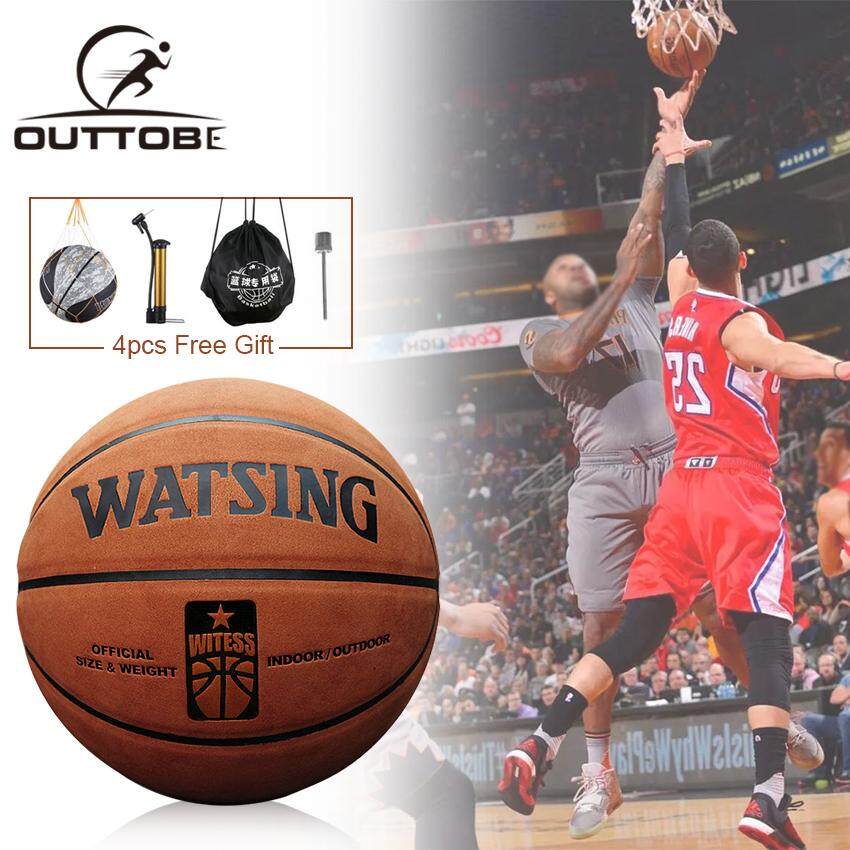
Back to pressure... The pressure in a ball depends on what sport the ball is for, what size it is, and what level of play it is. Different manufacturers measure pressure in different units, psi (pounds per square inch), bar (pressure unit approximately equal to one atmosphere), kgf / cm² (one kilogram of force per square centimeter), kPa (kilopascal). Pay attention to this!
The pressure in the ball is strongly influenced by the ambient temperature and atmospheric pressure. If we recall physics, then at high temperatures the substance expands, and at low temperatures, on the contrary, it decreases. So if, in winter, we pump up the ball on the street at -10 to the desired pressure, then after we bring the ball into a warm room, the pressure in it will increase slightly. This is true, for example, for soccer balls for games in winter. Therefore, it is better to inflate the ball directly where games or training are planned. If the operating pressure recommended by the manufacturer is not observed, the performance of the ball will be significantly worse and the ball will become unusable very quickly.